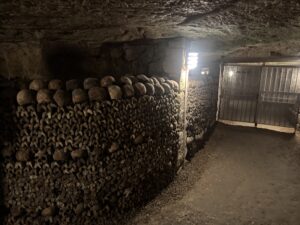The Weight of History: How Time Shapes Nations
The Weight of History: How Time Shapes Nations
History is more than a record of events. It is a foundation that shapes culture, identity, and even the physical landscapes of nations. The stark contrast between France, with its thousands of years of recorded history, and the United States, with just a few centuries, demonstrates how the depth of time influences a country’s architecture, traditions, and societal values.
Paris is often referred to as the City of Light and is a living museum of history. With over 2,000 years of recorded existence, the city’s structures and landmarks reflect layers of civilizations, from the Romans to the now Fashion Capital of the World. The Louvre was originally a medieval fortress before becoming a royal palace and is now a world-famous museum that presents France and Europe’s history through art. It houses artifacts spanning thousands of years, connecting modern-day visitors with ancient civilizations. Similarly, the Paris Catacombs are hundreds of miles of tunnels famously made of bones from centuries past. They serve as a reminder of the city’s long and complex past. These historical elements create a sense of continuity, where the past is always present, intertwining history into their culture.
Paris is often referred to as the City of Light and is a living museum of history. With over 2,000 years of recorded existence, the city’s structures and landmarks reflect layers of civilizations, from the Romans to the now Fashion Capital of the World. The Louvre was originally a medieval fortress before becoming a royal palace and now a world-famous museum, that presents France and Europe’s history through art. It houses artifacts spanning thousands of years, connecting modern-day visitors with ancient civilizations. Similarly, the Paris Catacombs are hundreds of miles of tunnels famously made of bones from centuries past (Site History). The tunnels were originally a quarry that generated needed stone for buildings such as Notre Dame. Now, there are risks of the tunnels collapsing (like they have before), but they are properly maintained to serve as a reminder of the city’s long and complex past. These historical elements create a sense of continuity, where the past is always present, intertwining history into their culture.

The contrast in history between France and the United States influences national perspectives. In France, history is the focus, fostering a deep sense of tradition and culture. In the U.S., innovation is prioritized, shaping a forward-thinking and adaptable infrastructure. Both approaches have their strengths. France’s constant for history preserves culture, while America’s youthful view has allowed for rapid progress. Ultimately, the weight of history (or the lack of), plays a crucial role in shaping the identity and development of nations.
Donovan H

Wonderful city. As a family, we had a great times with Donovan and his brother, Evan (semester abroad for Fordham in London). I agree with Donovan’s perspective on this trip.
Hello Donovan. THE CATACOMBS WERE CREEPY! PARIS IS COOL!